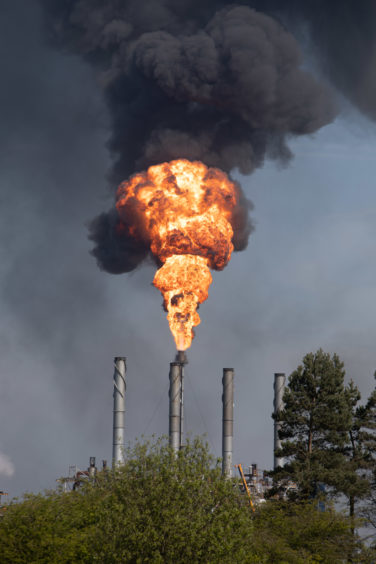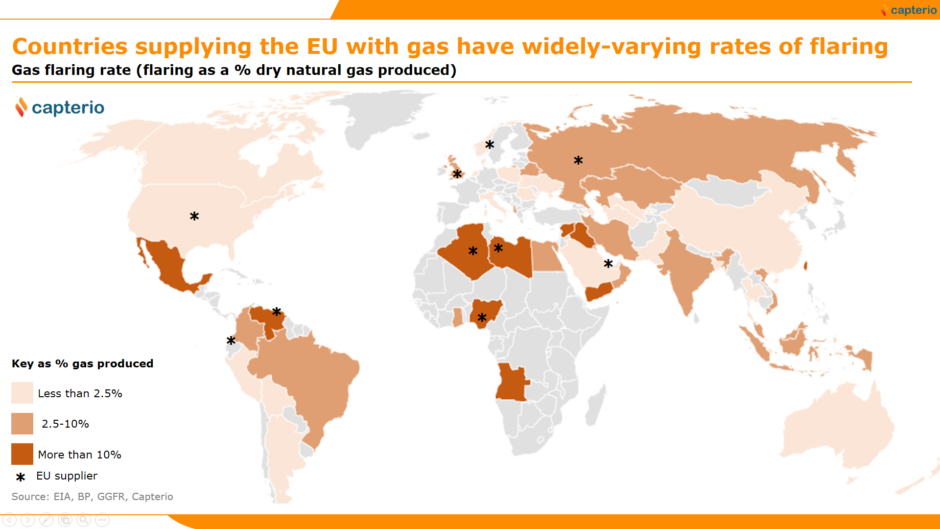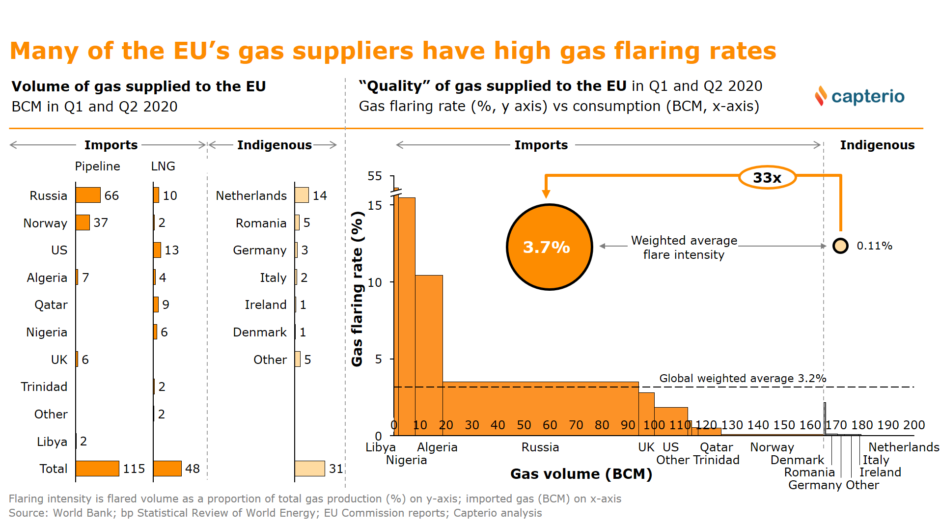
The gas-flaring rate of the European Union’s imported gas is 33x higher than indigenous production. We commend the EU’s recent methane strategy, but to support net zero the EU needs an equally clear EU gas flaring strategy.
Buying power
The EU consumes 10% of the world’s natural gas. In 2020 so far, 80% of this gas was imported. Driven by US, Australia, East Africa and others, the global supply of gas has increased materially and gas is now a buyers’ market.
In this buyer’s market, the EU will use its leverage to improve the quality of imported gas (here meaning the end-to-end carbon intensity) to deliver its net zero ambitions. So far, its efforts have been on methane. The new Methane Strategy (which outlines the need for new quality standards), is a good step forward.
Change is already under way, as demonstrated by the rejection by the French government of a deal to secure long-term supplies of LNG from the US. There have also been renewed commitments to lower methane emissions from the OGMP, a voluntary consortium of 62 companies.
But we need to go further than just methane. The value chain needs to account for all sources of greenhouse emissions – including gas flaring.
Countries cannot claim to supply low carbon intensity gas whilst simultaneously flaring at oil facilities. After all, wouldn’t it be perverse for a country to claim it had high-quality gas if its supplies from a gas field with a low carbon intensity were next to a neighbouring oilfield, which was abundantly flaring gas?
Embedded scale
Flaring is a big deal for the EU. The chart shows the supply source (left hand side) versus a flaring-focussed index for the “quality” of that gas – that is, gas flaring as a percentage of total gas production. The “gas flaring rate” of imported gas is 33x higher than indigenous production.
Policymakers should build on the EU’s excellent Methane Strategy and define the EU’s Gas Flaring Strategy. To help, we propose “12 things the EU should do about gas flaring”:
Key actions for member states
1. Mandate that companies that buy/import gas demand transparency (and report) on the quality of this gas, including full life-cycle emissions analysis, supported by clear reporting standards and independent verification or certification.
2. Mandate that operators report data on combustion efficiency measurements/assumptions at an asset level, and apply these within the EU ETS. We note that most operators simply assume (and are allowed to, by the EU ETS) that their flares operate at best-in-class rates of methane slip of 2%. However, most flaring globally is probably far from this best practice.
3. Impose carbon border pricing on imports into the EU for countries that do not apply effective or enforceable flaring penalties, should WTO rules allow. The ultimate sanction would be to block (or enforce penalties on) imports from countries where flaring is unacceptably high.
Key actions for exporters
4. Demand that all countries that export gas to the EU endorse – and deliver on – the World Bank’s Zero Routine Flaring (ZRF) initiative, which includes firm commitments by 2030.
5. Ensure that all countries independently and transparently establish – and own – a credible and data-driven flaring baseline for 2020. They could use the World Bank’s satellite-derived estimates as a starting point.
6. Mandate that all countries and companies submit a credible, data- and science-based, flare reduction programme to the World Bank Global Gas Flaring Reduction programme, or UNEP.
7. Assist countries to establish commercial incentives for in-country flare reduction programmes, by adjusting the fiscal terms for ringfenced flare capture projects to accelerate action. Similar incentives are common for small fields or marginal assets.
8. Encourage countries to accelerate the initiation of specific on-the-ground flare capture projects. Many commercially attractive and technically viable projects exist that will immediately reduce emissions.
9. Help countries to make it easier for investors to deliver flare capture projects. Countries need to reduce the complexity and cost of in-country operations. They should remove excessive, rigid, or redundant regulations, and unattractive subsidy regimes.
10. Support countries in stepping-up the effectiveness of regulators, encourage the metering of all flares and help countries to implement strict flaring penalties.
11. Encourage all extra-EU countries to measure the “methane slip” associated with flaring. Groups such as EDF and CCAC can deploy aerial-based measurement programmes focused explicitly on this issue.
12. Promote peer-to-peer sharing of best practices between countries, industry and government by creating working groups that radiate best practices, build capacity, deploy technology and local content.
The EU is increasingly focusing on gas quality. As a major buyer with choices and leverage, the group can make progress happen fast.
By focusing on flare reduction, it will help unlock some of the easiest technical, and most economically attractive, levers to decarbonise gas supplies. There is much to do to reach net zero – let’s get moving.

Recommended for you

